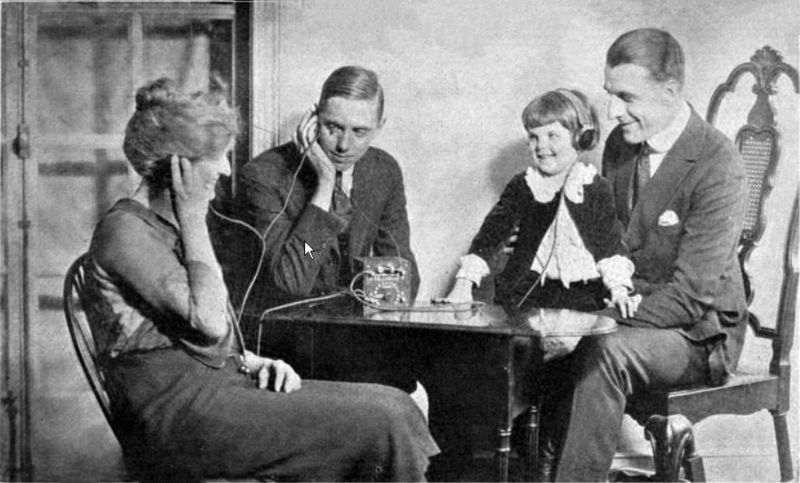
Size of this preview: 800 × 483 pixels. Other resolutions: 320 × 193 pixels | 640 × 386 pixels | 881 × 532 pixels.
Original file (881 × 532 pixels, file size: 274 KB, MIME type: image/png)
File history
Click on a date/time to view the file as it appeared at that time.
| Date/Time | Thumbnail | Dimensions | User | Comment | |
|---|---|---|---|---|---|
| current | 17:22, 2 May 2021 |  | 881 × 532 (274 KB) | Materialscientist | FFT |
| 19:50, 12 January 2014 |  | 881 × 532 (173 KB) | Chetvorno | A clearer, less grainy, higher quality version of image | |
| 08:26, 25 November 2010 |  | 823 × 494 (91 KB) | Chetvorno | {{Information |Description= {{en|Photo of a family in the 1920s listening to a Wikipedia:crystal radio. From a 1922 advertisement for Freed-Eisemann radios in ''Radio World'' magazine. Crystal sets are not powerful enough to power loudspeakers, so |
File usage
The following pages on the English Wikipedia use this file (pages on other projects are not listed):
Global file usage
The following other wikis use this file:
- Usage on bat-smg.wikipedia.org
- Usage on en.wikiquote.org
- Usage on es.wikipedia.org
- Usage on eu.wikipedia.org
- Usage on ga.wikipedia.org
- Usage on gl.wikipedia.org
- Usage on he.wikipedia.org
- Usage on hy.wikipedia.org
- Usage on ja.wikipedia.org
- Usage on lv.wikipedia.org
- Usage on ru.wikipedia.org
- Usage on rw.wikipedia.org
- Usage on ta.wikipedia.org
- Usage on tg.wikipedia.org
- Usage on vi.wikipedia.org
- Usage on zh.wikipedia.org



